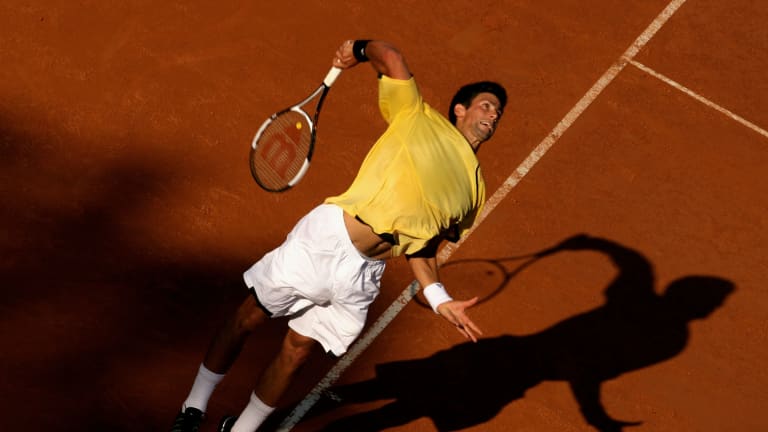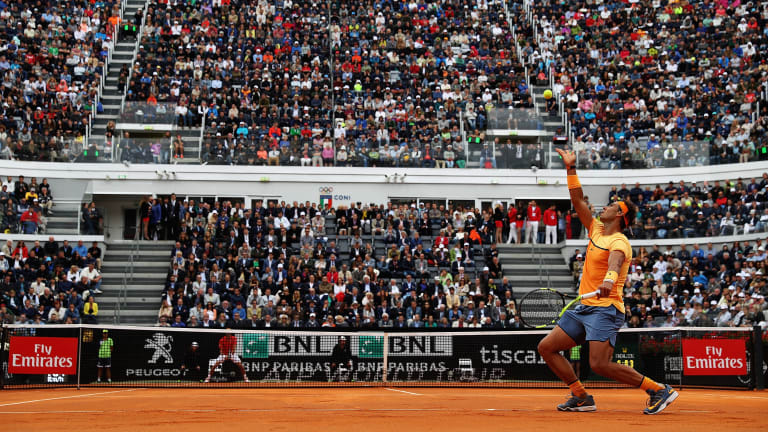Rome, Italy
There was something special about the Rafael Nadal and Novak Djokovic rivalry in Rome
By May 07, 2024Rome, Italy
Iga Swiatek stands alone on the WTA after completing Madrid-Rome double
By May 18, 2024Rome, Italy
Rome ATP Final Preview: Alexander Zverev and Nicolas Jarry cap another surprising men’s week
By May 18, 2024Rome, Italy
Iga Swiatek defeats Aryna Sabalenka to win Rome and complete rare Madrid-Rome sweep
By May 18, 2024Rome, Italy
Rome: Nicolas Jarry seeks Chile's first Masters 1000 title in 25 years after edging Tommy Paul
By May 18, 2024Rome, Italy
Iga Swiatek vs. Aryna Sabalenka: What their Rome final could mean for their rivalry
By May 17, 2024Rome, Italy
Alexander Zverev returns to Rome final with comeback win over Alejandro Tabilo
By May 17, 2024Rome, Italy
Tommy Paul, Taylor Fritz lead American men in discovering (or rediscovering) the joys and secrets of tennis on red clay
By May 17, 2024Rome, Italy
Iga Swiatek continues to dominate Coco Gauff, but she’s also making her a better player
By May 16, 2024Rome, Italy
Iga Swiatek now 10-1 against Coco Gauff, awaits Rome final opponent
By May 16, 2024Rome, Italy
There was something special about the Rafael Nadal and Novak Djokovic rivalry in Rome
At the Foro Italico, as much as on any other court, they’ve tested and inspired and brought out each other’s best.
Published May 07, 2024
Advertising

Novak Djokovic in Rome, 2007.
© 2007 Getty Images
Advertising

Rafael Nadal in Rome, 2007.
© 2007 Getty Images
Advertising
Advertising

In their 2016 Rome collision, Nadal did everything he knew how to do to win on clay, and Djokovic had the response every time.
© 2016 Getty Images